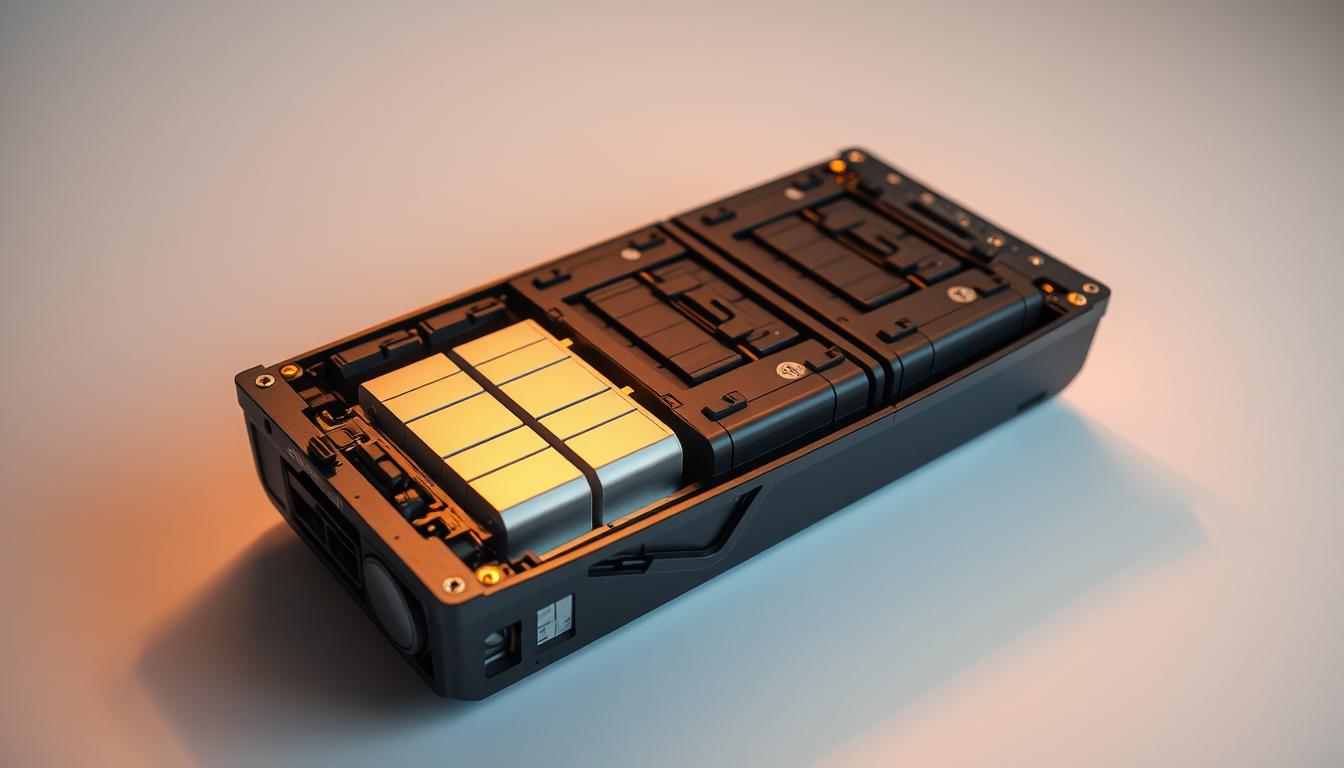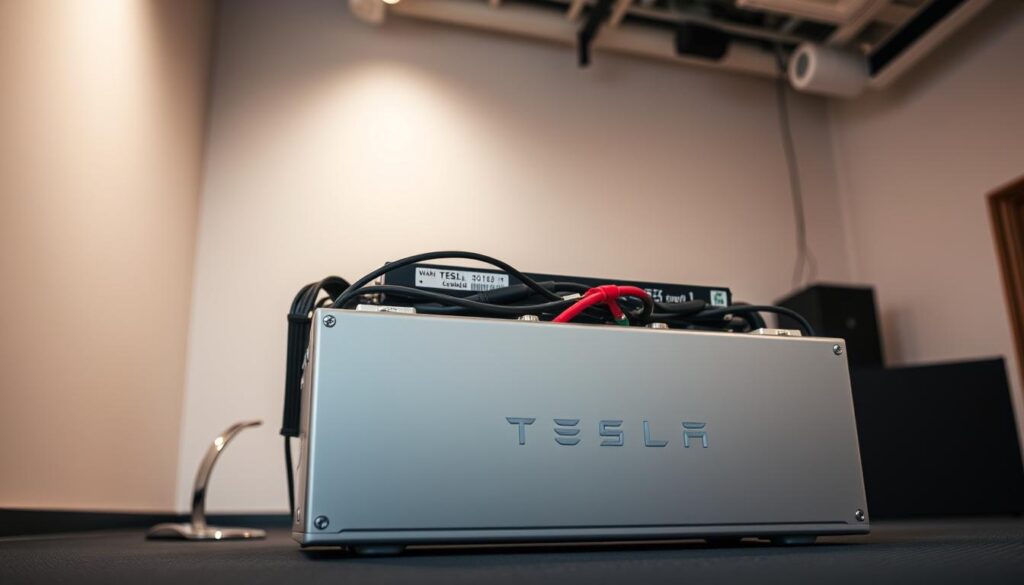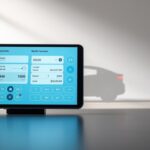

Tesla battery replacement costs
As the world shifts towards eco-friendly cars, Tesla has become a leading brand in the electric vehicles market. With the increasing popularity of Tesla cars, owners are now concerned about the longevity of their batteries and the costs associated with replacing them.
Understanding Tesla battery replacement costs is crucial for owners who want to plan their finances effectively. The cost of replacing a Tesla battery can be significant, and it’s essential to consider the factors that affect this cost.
Key Takeaways
- Factors affecting Tesla battery replacement costs
- Average cost of replacing a Tesla battery
- Warranty and insurance options for Tesla batteries
- Tips for extending the life of your Tesla battery
- Comparison of Tesla battery replacement costs with other electric vehicles
Understanding Tesla Battery Technology
The backbone of Tesla’s electric vehicles is their sophisticated lithium-ion battery technology, designed to optimize energy storage and efficiency. This technology is a critical component that enables Tesla vehicles to achieve their impressive range and performance.
How Tesla Lithium-ion Batteries Work
Tesla’s lithium-ion batteries operate on the principle of electrochemical reactions, where lithium ions move between the positive cathode and negative anode, facilitating the storage and release of electrical energy. This process is highly efficient and allows for a significant amount of energy to be stored in a relatively compact package.
Battery Cell Structure
The battery cells used by Tesla are typically cylindrical or prismatic in shape and consist of multiple layers, including the cathode, anode, separator, and electrolyte. The specific design and chemistry of these cells can vary depending on the application and the desired performance characteristics.
Battery Management System
The Battery Management System (BMS) is a sophisticated electronic system that monitors and controls the state of charge, voltage, and temperature of the battery cells. It plays a crucial role in ensuring the safety, efficiency, and longevity of the battery pack by preventing overcharging, overheating, and other potentially damaging conditions.
Battery Lifespan Expectations
Tesla batteries are designed to last for many years, with their capacity gradually decreasing over time due to natural degradation processes. Understanding the factors that affect this degradation is essential for maximizing the lifespan of the battery.
Average Degradation Rates
On average, Tesla batteries retain about 90% of their original capacity after 100,000 miles, although this can vary depending on several factors, including driving habits, environmental conditions, and charging practices.
Factors Affecting Longevity
Several factors can influence the longevity of Tesla batteries, including temperature exposure, charging habits, and driving patterns. For instance, frequent rapid charging and exposure to extreme temperatures can accelerate degradation.
| Factor | Impact on Battery Longevity |
|---|---|
| Temperature Exposure | High temperatures can accelerate degradation, while low temperatures can reduce range |
| Charging Habits | Frequent rapid charging can reduce battery lifespan |
| Driving Patterns | Aggressive driving can increase battery degradation |
By understanding these factors and taking steps to mitigate their impact, Tesla owners can help maximize the lifespan of their vehicle’s battery.
Average Tesla Battery Replacement Costs by Model
Understanding the battery replacement costs for Tesla models is essential for current and prospective owners who want to maximize their electric vehicle benefits. The cost of replacing a Tesla battery can vary significantly depending on the model and battery capacity.
Model 3 Battery Replacement Costs
The Tesla Model 3 is one of the most popular models, and its battery replacement costs can differ based on the battery range.
Standard Range Battery
The standard range battery for the Model 3 has a lower replacement cost compared to the long-range version. On average, the cost can range from $5,000 to $7,000.
Long Range Battery
For the long-range battery, the replacement cost is higher due to its larger capacity. Owners can expect to pay between $8,000 and $12,000.
Model S Battery Replacement Costs
The Model S, being a higher-end model, has more complex battery systems, affecting replacement costs.
75 kWh to 100 kWh Batteries
Battery replacement for the Model S, particularly for the 75 kWh to 100 kWh versions, can be quite expensive. Costs can range from $13,000 to $20,000 or more, depending on the specific capacity and configuration.
Model X Battery Replacement Costs
Similar to the Model S, the Model X has complex battery systems, and its replacement costs are also on the higher side. On average, owners might pay between $14,000 and $22,000.
Model Y Battery Replacement Costs
The Model Y, being one of Tesla’s newer models, has a battery replacement cost that is somewhat comparable to the Model 3, given its similar battery technology. Costs can range from $6,000 to $10,000, depending on the battery capacity.
In conclusion, Tesla battery replacement costs vary widely across different models and battery capacities. Understanding these costs is crucial for Tesla owners to plan for the long-term maintenance of their vehicles and to fully enjoy the electric vehicle benefits.
Factors That Affect Tesla Battery Replacement Pricing
The cost of replacing a Tesla battery is not straightforward and depends on various factors. Understanding these elements can help Tesla owners prepare for potential expenses and make informed decisions about their vehicle’s maintenance.
Battery Size and Capacity
One of the primary factors influencing Tesla battery replacement costs is the size and capacity of the battery. Larger batteries with higher capacities are more expensive to replace. For instance, the battery in a Tesla Model S Long Range is more costly to replace than that in a Model 3 Standard Range. As Tesla continues to innovate and increase battery capacities, the cost implications of replacement also evolve.
Vehicle Age and Manufacturing Date
The age of the vehicle and its manufacturing date also play a significant role in determining battery replacement costs. Older models may have batteries that are no longer in production, potentially increasing costs due to scarcity. Additionally, advancements in battery technology over time can affect pricing, with newer batteries possibly being more cost-effective.
Labor Costs and Geographic Location
Labor costs for battery replacement can vary significantly based on the location and the service provider. Tesla service centers in different regions may charge differently for the same service. Moreover, labor rates can be influenced by local economic conditions and the availability of skilled technicians. As Elon Musk once said,
“The best way to get a good idea is to get a lot of ideas.”
In this context, shopping around for labor costs can lead to significant savings.
Supply Chain Considerations
Supply chain factors, including parts availability and market fluctuations, can also impact Tesla battery replacement pricing.
Parts Availability
The availability of battery parts is crucial in determining replacement costs. If certain components are scarce, prices may rise. Tesla’s global supply chain dynamics, including production rates and distribution logistics, can affect how quickly and at what cost replacement parts are available.
Market Fluctuations
Market fluctuations, including changes in raw material prices (such as lithium and cobalt), can influence battery production costs. These fluctuations can then be passed on to consumers in the form of higher or lower battery replacement costs. Staying informed about market trends can help Tesla owners anticipate potential cost changes.
In conclusion, the cost of Tesla battery replacement is influenced by a complex interplay of factors. By understanding these elements, Tesla owners can better navigate the process and potentially mitigate costs. Regularly checking the vehicle’s health and staying updated on market trends can also contribute to more informed decision-making.
Tesla Battery Warranty Coverage
Understanding the warranty coverage for your Tesla battery is crucial for maintaining your electric vehicle’s performance and longevity. Tesla provides comprehensive warranty terms that vary by model and include specific conditions.
Standard Warranty Terms
Tesla’s standard warranty for batteries includes coverage for a certain period or mileage, whichever comes first. This warranty ensures that the battery retains a significant percentage of its original capacity.
Model-Specific Coverage
Different Tesla models have varying warranty terms. For instance, the Model S and Model X have an 8-year or infinite-mile battery warranty, while the Model 3 and Model Y have an 8-year or up to 120,000 miles warranty for certain configurations.
| Tesla Model | Battery Warranty |
|---|---|
| Model S | 8-year, infinite miles |
| Model X | 8-year, infinite miles |
| Model 3 (Long Range) | 8-year, up to 120,000 miles |
| Model Y (Long Range) | 8-year, up to 120,000 miles |
Battery Capacity Retention Guarantees
Tesla guarantees that its batteries will retain a certain percentage of their capacity over the warranty period. For example, Model S and Model X batteries are guaranteed to retain at least 70% of their capacity after 8 years.
Extended Warranty Options
Tesla offers extended warranty options for additional peace of mind. These can be purchased separately and provide extended coverage beyond the standard warranty period.
What’s Not Covered by Warranty
While Tesla’s warranty is comprehensive, there are certain scenarios that are not covered, including physical damage and improper use.
Physical Damage Exclusions
Damage caused by accidents, vandalism, or natural disasters is not covered under the standard warranty. Owners are advised to check their insurance policies for such incidents.
Improper Use Scenarios
Using the vehicle in a manner not intended by the manufacturer, such as racing or overloading, can void the warranty. Proper use and maintenance are essential to keeping the warranty valid.

Signs Your Tesla Battery Needs Replacement
Several signs can indicate that your Tesla battery is deteriorating and may need to be replaced. As the electric vehicle market continues to grow, understanding these signs becomes increasingly important for Tesla owners.
Decreased Range and Performance
One of the most noticeable signs that your Tesla battery may need replacement is a significant decrease in its range and overall performance. If you find that your vehicle’s range has diminished substantially, it could be a sign that the battery is aging.
Battery Health Indicators in Tesla UI
Tesla provides battery health indicators within the vehicle’s UI. Monitoring these indicators can give you insights into your battery’s condition. A significant drop in battery health percentage may indicate that it’s time to consider a replacement.
Warning Messages and System Alerts
Tesla vehicles are equipped with sophisticated systems that can detect potential issues, including battery problems. If you receive warning messages or system alerts related to your battery, it’s essential to have them checked by a professional.
Diagnostic Test Results
Regular diagnostic tests can help identify battery issues before they become critical. Tesla service centers can perform these tests to assess your battery’s condition and advise on the necessity of a replacement.
Being aware of these signs can help you plan for your Tesla’s battery replacement, ensuring that your vehicle continues to perform optimally. As the electric vehicle market evolves, staying informed about your vehicle’s maintenance needs is crucial for a seamless ownership experience.
The Battery Replacement Process
Tesla owners may need to replace their vehicle’s battery at some point, and understanding the process can help alleviate concerns. Replacing a Tesla battery involves several steps, from initial assessment to final installation.
Tesla Service Center Procedures
Tesla Service Centers are equipped to handle battery replacements efficiently. The process begins with scheduling an appointment and assessing the vehicle’s condition.
Scheduling and Preparation
To replace a Tesla battery, owners should contact their local Tesla Service Center to schedule an appointment. It’s essential to provide detailed information about the vehicle, including its model and any issues experienced.
- Contact local Tesla Service Center
- Schedule an appointment
- Provide vehicle information
Replacement Timeline
The replacement timeline can vary depending on the service center’s workload and the complexity of the replacement. Tesla typically provides a loaner vehicle or other temporary transportation solutions during this period.
Third-Party Replacement Options
Some Tesla owners may consider third-party providers for battery replacement. While this can be a cost-effective option, it’s crucial to ensure that the provider is reputable and uses compatible parts.
- Research third-party providers
- Verify provider reputation and compatibility
- Compare costs and services
Temporary Transportation Solutions
Tesla often provides temporary transportation solutions, such as loaner vehicles, to minimize inconvenience during the replacement process. Owners should discuss these options with their service center.

In conclusion, replacing a Tesla battery involves careful planning and execution. Whether using Tesla Service Centers or third-party providers, understanding the process can help ensure a smooth experience.
Cost-Saving Alternatives for Electric Vehicles
With the growing popularity of eco-friendly cars, the need for cost-saving battery replacement alternatives has become more pressing. Electric vehicle (EV) owners are increasingly looking for ways to reduce the financial burden of battery replacement without compromising on performance.
Battery Module Replacement
One cost-effective approach is replacing individual battery modules rather than the entire battery pack. This method is particularly useful when only a few modules are faulty, as it reduces waste and saves on replacement costs.
Refurbished Battery Options
Refurbished batteries offer another viable alternative. These batteries are repaired and tested to meet manufacturer standards, often at a lower cost than brand-new batteries. EV owners should, however, ensure that refurbished batteries come with a warranty.
Battery Reconditioning Services
Battery reconditioning involves restoring the battery’s capacity and performance through specialized techniques. This service can extend the battery’s lifespan, delaying the need for replacement.
Insurance Coverage Possibilities
Exploring insurance options can also mitigate battery replacement costs. Two key areas to consider are comprehensive plans and extended warranty claims.
Comprehensive Plans
Comprehensive insurance plans may cover battery damage or failure under certain conditions. Reviewing the policy details is crucial to understand what is covered.
Extended Warranty Claims
For vehicles still under warranty or with an extended warranty, battery replacement might be covered. It’s essential to review the warranty terms and file claims promptly if necessary.
| Cost-Saving Measure | Description | Potential Savings |
|---|---|---|
| Battery Module Replacement | Replacing faulty modules instead of the entire pack | Up to 50% of full replacement cost |
| Refurbished Batteries | Using repaired and tested batteries | 20-40% less than new batteries |
| Battery Reconditioning | Restoring battery capacity and performance | Delays replacement, saving future costs |
| Insurance Coverage | Utilizing comprehensive plans and warranty claims | Varies based on policy and warranty terms |
How Tesla Compares to Other Electric Vehicles in Battery Replacement Costs
As the electric vehicle market continues to expand, understanding battery replacement costs becomes increasingly important. This comparison will help potential buyers and current owners understand how Tesla’s battery replacement costs stack up against other popular electric vehicles.
Nissan Leaf Battery Replacement Costs
The Nissan Leaf is one of the most popular electric vehicles on the market. Battery replacement costs for the Leaf can vary significantly depending on the model year and battery capacity. On average, a new battery pack for a Nissan Leaf can cost between $5,000 to $8,000.
Chevrolet Bolt Battery Replacement Costs
The Chevrolet Bolt offers a competitive pricing strategy for battery replacement. According to available data, replacing the battery in a Chevrolet Bolt can cost around $6,000 to $10,000, depending on the specific model and year.
Ford Mustang Mach-E Battery Replacement Costs
The Ford Mustang Mach-E is a relatively new entrant in the EV market. While specific battery replacement costs are not yet widely available, estimates suggest that it could range from $5,500 to $9,500.
Luxury EV Brand Comparisons
Luxury electric vehicles often come with higher price tags, including battery replacement costs. Let’s examine two prominent luxury EV brands: Audi e-tron and Porsche Taycan.
Audi e-tron
The Audi e-tron is a luxury SUV with a premium price. Battery replacement for the Audi e-tron is estimated to cost between $10,000 to $15,000, reflecting its high-end features and larger battery capacity.
Porsche Taycan
The Porsche Taycan is a high-performance electric sports car. The cost of replacing its battery can be substantial, ranging from $12,000 to $18,000 or more, depending on the specific model and configuration.
To better understand the comparison, let’s summarize the battery replacement costs for these electric vehicles in a table:
| Electric Vehicle Model | Battery Replacement Cost Range |
|---|---|
| Tesla Model 3/Model Y | $5,000 – $12,000 |
| Nissan Leaf | $5,000 – $8,000 |
| Chevrolet Bolt | $6,000 – $10,000 |
| Ford Mustang Mach-E | $5,500 – $9,500 |
| Audi e-tron | $10,000 – $15,000 |
| Porsche Taycan | $12,000 – $18,000 |
In conclusion, while Tesla’s battery replacement costs are competitive, especially for its lower-end models, luxury EVs and some other mass-market models have varying costs. Understanding these costs is crucial for making informed decisions in the EV market.
Conclusion: Planning for Your Tesla Battery Future
As Tesla continues to revolutionize the electric vehicle (EV) industry, understanding the costs associated with battery replacement is crucial for owners who are committed to green transportation. The factors influencing replacement costs, such as battery size, vehicle age, and labor costs, play a significant role in determining the overall expense.
By being proactive about your vehicle’s battery health, you can ensure a longer lifespan and optimal performance. Tesla owners can explore various alternatives, including battery module replacement and refurbished battery options, to reduce costs.
As the demand for EVs continues to grow, the importance of sustainable and cost-effective battery solutions becomes increasingly evident. By planning ahead and staying informed, Tesla owners can enjoy a seamless and environmentally friendly driving experience, supporting the transition to green transportation.
FAQ
What is the average cost of replacing a Tesla battery?
How long does a Tesla battery last before needing replacement?
Are there any eco-friendly alternatives to replacing a Tesla battery?
Can I replace my Tesla battery with a third-party service provider?
How do I know if my Tesla battery needs to be replaced?
Are there any incentives for electric vehicle owners to replace their batteries or upgrade to new models?
Can I negotiate the cost of Tesla battery replacement with Tesla Service Centers?
How does the cost of Tesla battery replacement compare to other electric vehicle brands?
Add a comment Cancel reply
Categories
- Auto Detailing (6)
- Car News (13)
- Car Reviews (10)
- Uncategorized (2)
Recent Posts
About us

Popular Tags
Related posts


New and Second hand EV







